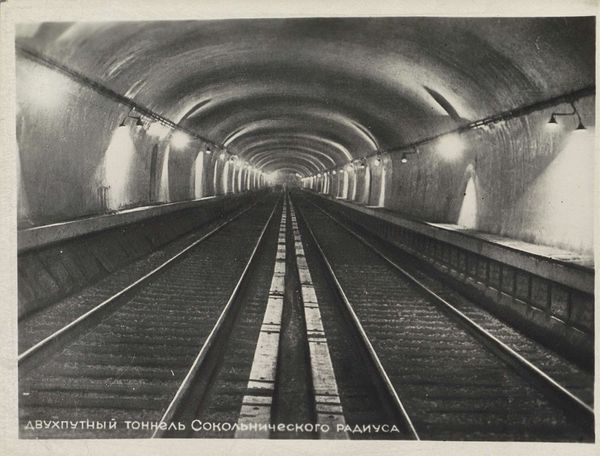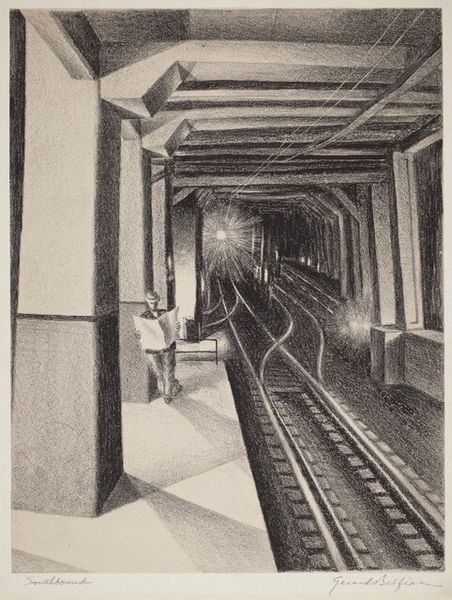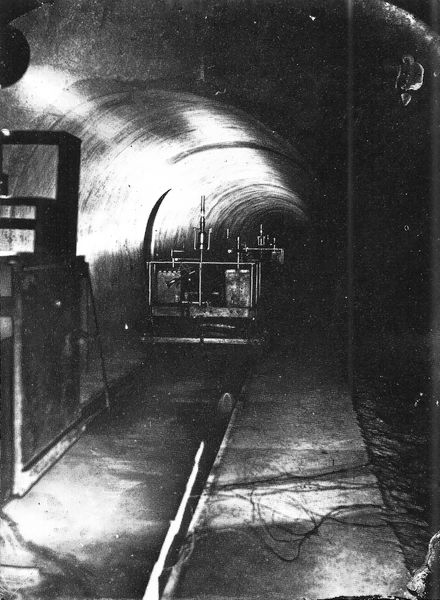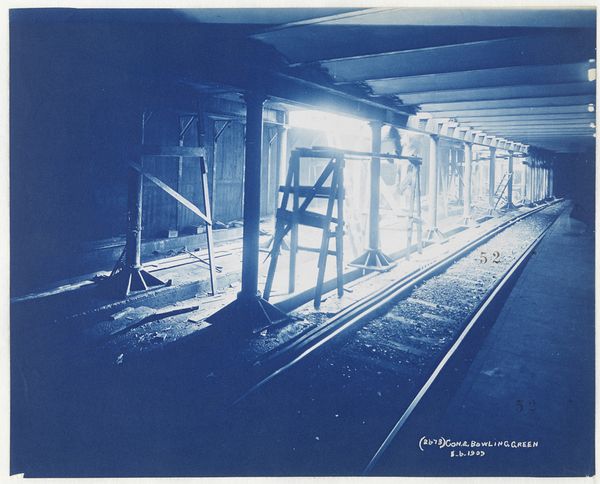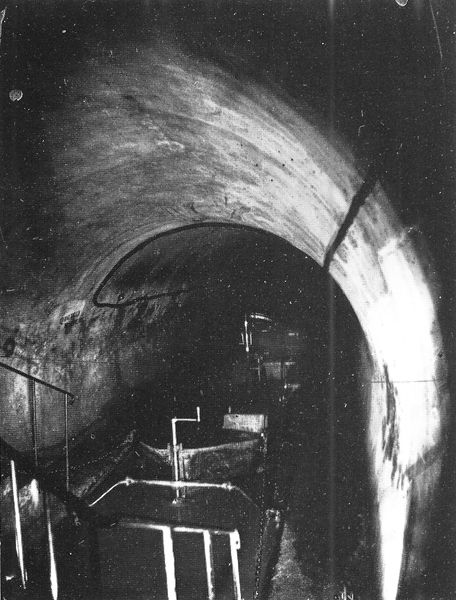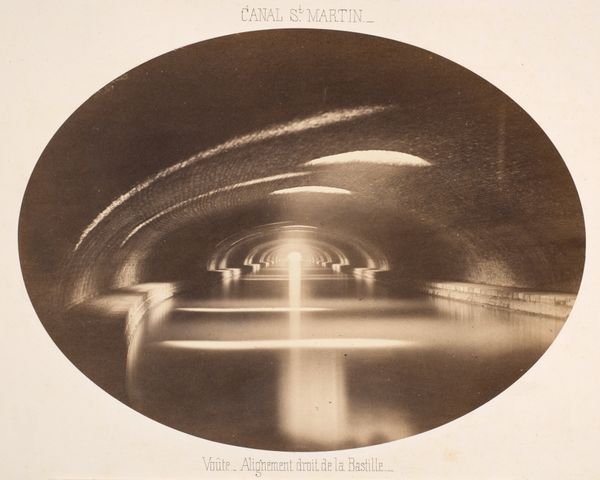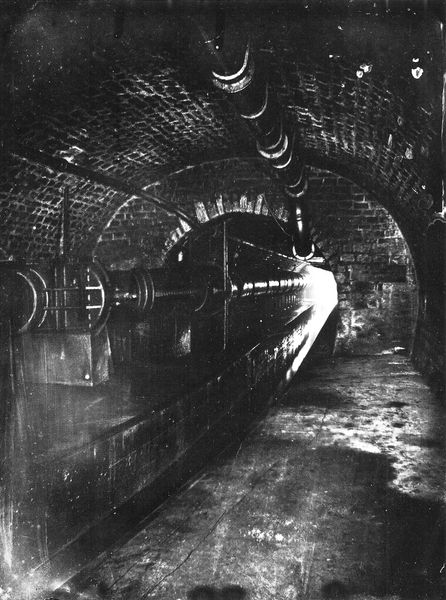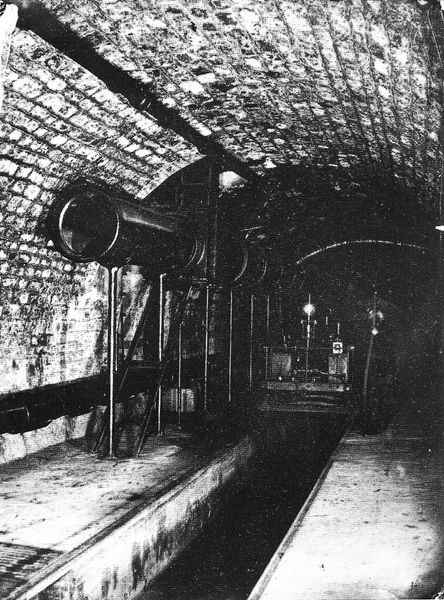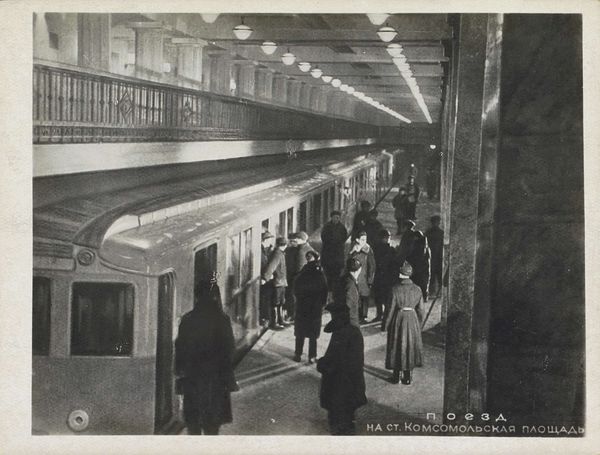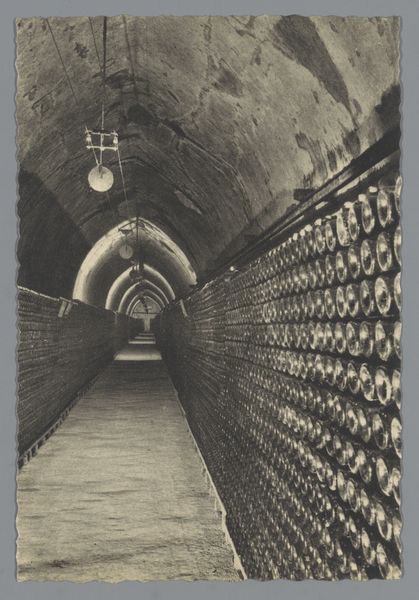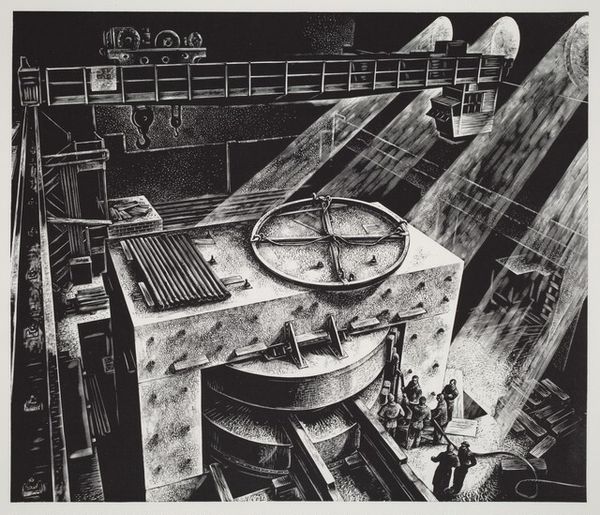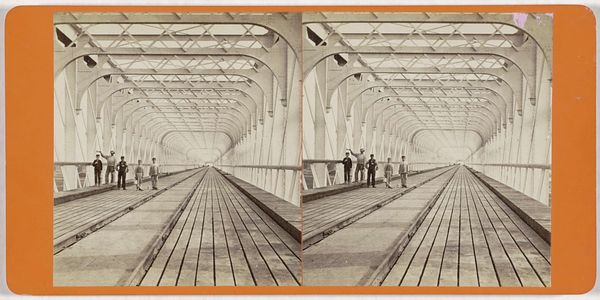
photography
#
constructivism
#
photography
#
geometric
#
cityscape
#
realism
Dimensions: height 83 mm, width 118 mm
Copyright: Rijks Museum: Open Domain
Curator: My first impression is cold and industrial. The stark contrasts, the almost perfect symmetry…it’s unsettling. Editor: I understand that initial reaction. What we’re looking at is a photograph from between 1930 and 1935, titled "Spoorbuis met rails op de Kirovlijn," a rather unassuming title for a scene pregnant with socio-political implications. Curator: Socio-political? It looks like a…tunnel. A utilitarian space, if a rather dramatically lit one. Where’s the deeper story? Editor: It's a subway tunnel. But consider the time: the Soviet Union, rapid industrialization under Stalin. Subways weren't just about transportation; they were symbols of progress, modernity, and collective achievement. Spaces for the people. Curator: Ah, I see. So the tunnel itself is a symbol. And the receding perspective emphasizes the forward momentum, the endless march towards progress? A symbol of social progression by implementing progressivist technologies and infrastructures? Editor: Precisely. This particular line, the Kirov Line, embodies that perfectly. Though at the surface, one could describe this photorealistic construction with stark, clear, even romantic, attention to geometry and balance, that aesthetic also speaks to power. Curator: Yes, there is definitely a sense of power, of the monolithic. I see now the photograph itself acts almost as propaganda, then: a visualization of a bright technological future. Editor: To me, the almost overwhelming geometry serves to show the crushing demands imposed on workers building the USSR’s rapid-paced industrialized world. Those workers often faced horrific conditions during this intense time. Curator: The image becomes layered, then, with conflicting narratives. On one hand, hope and aspiration; on the other, perhaps, silent testimony to untold labor and sacrifice. Editor: Absolutely. Consider this image's resonance with works by artists who interrogated technological utopianism—we must stay critically engaged to resist replicating totalizing structures of thought. Curator: Well, looking at it now, the coldness I initially felt remains, but it's… tempered with a kind of sober awareness. Thank you for helping me see this space in such a richly constructed context. Editor: The past always informs the present. We can and must ensure the stories that art brings to our awareness change our perspectives in order to affect a better world.
Comments
No comments
Be the first to comment and join the conversation on the ultimate creative platform.
